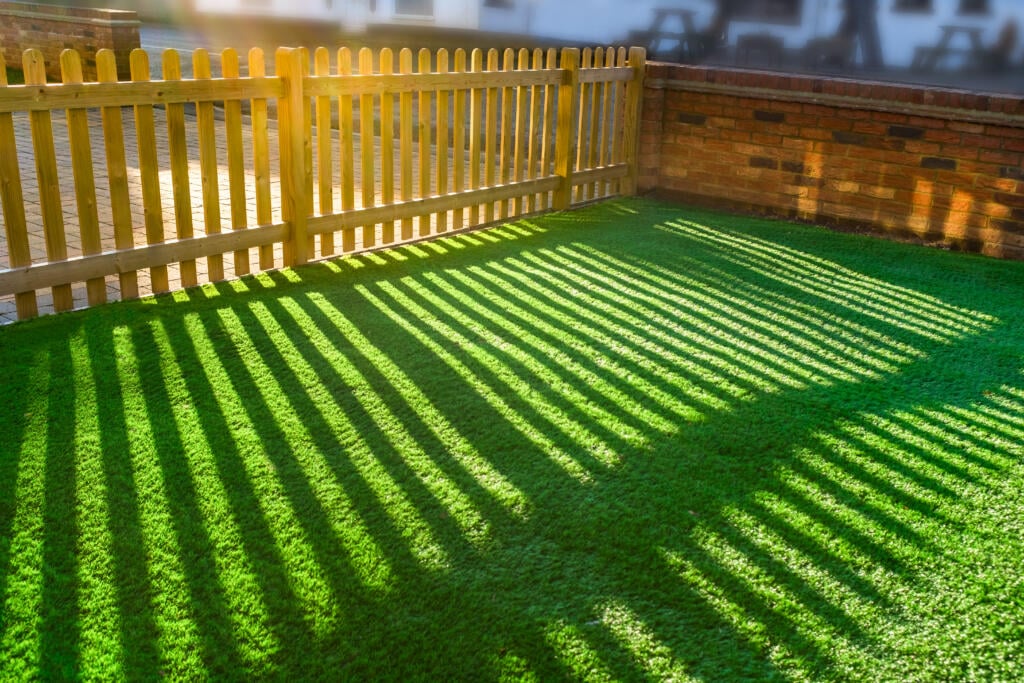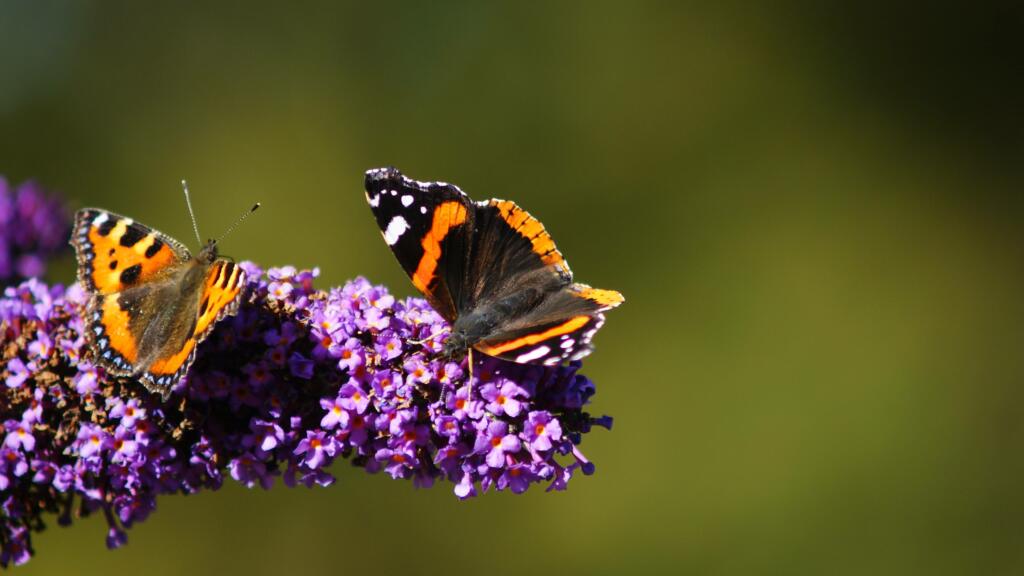
Artificial grass vs the real thing - which type are you rooting for
Lou Dearden
Eight ways to weed the natural way
Weeding is one job that can’t be avoided, no matter your garden size. Whether you have a window box, a small patio or an expansive plot, weeds are considered a nuisance as they can be difficult to control, spread quickly and can spoil a garden’s overall appearance.
In the past, your instinct may have been to reach for an industrial-strength weedkiller to solve the problem. However, this can often cause more harm than good – killing the plants you love as well as the weeds you don’t, and potentially poisoning local wildlife. Thankfully, there are plenty of effective ways to get rid of weeds naturally without chemicals, as we’ll go on to explain.
But before we do, it’s worth thinking about the weeds you’re planning to eliminate. Could you even learn to live with them? After all, many plants considered ‘weeds’ could actually benefit both wildlife and the health of your garden. We’ll discuss this later in the article… but if you’re adamant the weeds need to go, here’s how to do it.
Weeding is one job that can’t be avoided, no matter your garden size. Whether you have a window box, a small patio or an expansive plot, weeds are considered a nuisance as they can be difficult to control, spread quickly and can spoil a garden’s overall appearance.
In the past, your instinct may have been to reach for an industrial-strength weedkiller to solve the problem. However, this can often cause more harm than good – killing the plants you love as well as the weeds you don’t, and potentially poisoning local wildlife. Thankfully, there are plenty of effective ways to get rid of weeds naturally without chemicals, as we’ll go on to explain.
But before we do, it’s worth thinking about the weeds you’re planning to eliminate. Could you even learn to live with them? After all, many plants considered ‘weeds’ could actually benefit both wildlife and the health of your garden. We’ll discuss this later in the article… but if you’re adamant the weeds need to go, here’s how to do it.
 Credit: Shutterstock/David Prahl
Credit: Shutterstock/David PrahlWeeds will grow where there is moisture, sunlight and space, so if your beds feature areas of bare soil, they’re susceptible to unwanted plant visitors. To combat this, cover these patches with dense groundcover plants that will outcompete the weeds. If you have a vegetable garden, try planting herbs around your plants, I particularly like thyme for its fragrance.
For your beds and borders, online plant retailer J Parkers recommends an array of plants to suppress weeds, including aubrieta ‘Red Cascade’ for full sun, Sedum spurium for partial shade, and Hosta ‘White Feather’ for full shade.
Prefer not to dig up weeds? How about trying a no-dig garden method to prevent weeds from forming? Simply cover the ground with cardboard, avoiding the plants you want to keep, then give it a good drench with water.
Besides killing any existing weeds and stopping new ones from popping up, the cardboard will decompose over time, adding carbon back into the soil. It’s also a good way to use any leftover cardboard and is free alternative to buying a fabric weed suppressant.
Rebecca Bevan, senior national consultant for plant health sustainability at the National Trust and author of The National Trust School of Gardening, thinks it’s an ideal option if you’re planning to clear a weedy area to turn into a vegetable patch: “Laying cardboard to suffocate the weeds and then covering it with a really thick layer of mulch can be effective, and it also disturbs the soil structure and organisms far less than digging would,” she says.
If your garden isn’t inundated with weeds, one of the simplest methods is to pull them out by hand before they set seed. Get yourself a pair of gardening gloves, a garden claw or a sharp trowel, and tackle them head on. Make sure to get deep within the soil to remove the root to avoid it growing back. This is particularly crucial when dealing with knotweed, bindweed or couch grass, which can regrow from even the smallest fragments of root left behind.
But what about those hard-to-reach weeds between paving slabs? “A hooked knife is useful,” says Bevan. “However, for very small weeds or moss on paving, stiff brushes are effective.
“Some of our team also rake their gravel regularly to disturb the surface slightly and stop weeds getting established,” she adds.
Wickes has a soft grip garden hand weeder for £4.50, or if you prefer to stand and favour a long-handled tool, Fiskars Xact weed puller is an alternative option, available at B&Q, £49.
Spring clean your weeds
When’s the best time to tackle those weeds? Bevan recommends considering your timing to reduce the work: “Weeding in spring when new growth first appears is far less work than if you let weeds get established and put down deep roots or set seed.”
Weeding is easier after rainfall as the soil is moist and loose. When the soil is dry, it is tight and weeds are harder to remove.
Aside from helping to save water by retaining moisture in the soil, keeping plants hydrated for longer, mulches also keep weeds at bay. The RHS recommends using bark or wood chips to smother weeds around plants, stating on its website: “Keep them topped up to a minimum depth of 10-15cm (4-6in) to smother established annual weeds.”
 Credit: Shutterstock / Maria Sbytova
Credit: Shutterstock / Maria SbytovaApart from being a fertiliser, cornmeal (also known as polenta) can help prevent weeds if you spread it over your soil. Although the weed seeds still germinate, the cornmeal hinders the expansion of a plant’s roots, and it will quickly die of dehydration.
For maximum effect, spread the cornmeal in the spring before weeds start to grow and use 100g of cornmeal per 1m2.
Don’t use cornmeal on new seedlings
Wait until a newly–planted vegetable garden has established before using cornmeal to suppress weeds, as it can prevent new seeds from growing.
Boil a kettle and carefully pour the water over the top of the weeds, avoiding any nearby plants.
The boiling water acts as a natural “herbicide”, killing only the portion of the plant it comes into contact with.
The hot water method probably isn’t the best solution if you’ve got a crop of weeds to get rid of, especially if they are near other plants, but it can be helpful if you’ve got weeds growing out of cracks in pavements and patios.
Be mindful of making sure the water doesn’t splash back onto yourself and cause a nasty scald.
Forget about splashing it on your chips – save your vinegar to kill your weeds. Create a solution of 5% white vinegar (acetic acid) to 95% water, and decant into a spray bottle for easy application. While it won’t get rid of weeds with deep roots, it will work a treat on smaller, less established weeds, causing death by dehydration.
Vinegar can be harmful if sprayed onto other plants, so be careful how you spray, or keep this method for paths and driveways that are free of other plants.
When weeds are in awkward spaces, it’s not always possible to weed by hand or use preventative methods, such as mulches. Even the National Trust resorts to alternative methods, as Bevan explains: “We sometimes use gas burners, especially on hard–to–weed surfaces like cobbles or paving. We recognise that gas is still polluting, but it’s an option where hand weeding is especially tricky.”
 Credit: Shutterstock/Lukas Beno
Credit: Shutterstock/Lukas BenoAlthough weeds are seen as unwanted plants in the garden, they have many benefits that support the ecosystem. According to One Earth, a not-for-profit that supports work to solve the climate crisis, weeds act as pollinators, provide seeds for wildlife and bounty for microorganisms. They are also good indicators of soil health, provide nutrients for other plants and help prevent erosion. It sounds like they’re not quite the bad guy after all.
In fact, weeds will be celebrated at this year’s Chelsea Flower Show, with a third of show gardens featuring them as “resilient plants”. The term was coined by garden designer Tom Massey, who designed the Chelsea Show garden on behalf of the Royal Entomological Society.
Sheila Das, garden manager at Royal Horticultural Society (RHS) Wisley, is also keen to change our perspective on weeds from garden villain to garden hero. In an article in the Guardian, she prefers to refer to them as “superweeds”.
“People often get stressed about dandelions on the lawn but they are a good source of nectar [for bees] because they flower early in the year and they’re really nice to look at. Even foxgloves and knapweed [are welcome].”

Written by Camilla Sharman she/her
Published: Updated:
With her 30 years of experience, Camilla Sharman has covered a wide range of sectors within the business and consumer industries both as a feature, content, and freelance writer. As a business journalist, Camilla has researched articles for many different sectors from the jewellery industry to finance and tech, charities, and the arts. Whatever she’s covered, she enjoys delving deep and learning the ins and out of different topics, then conveying her research within engaging content that informs the reader.

Lou Dearden

Amy Cutmore

Rosanna Spence

Rosanna Spence